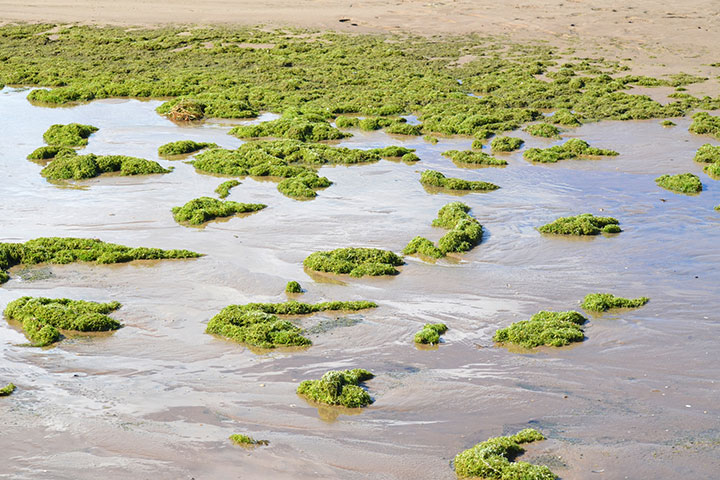Stuck in the muck: Comparing how experts and local communities see beach muck in the Great Lakes
Stuck in the muck: Comparing how experts and local communities see beach muck in the Great Lakes
Stuck in the muck: Comparing how experts and local communities see beach muck in the Great Lakes
Program: Water Center U-M Capacity Building Grants
All Water Center U-M Capacity Building Grants projects »

Photo Courtesy of Michigan Sea Grant
Investigators
Avik Basu, U-M School of Natural Resources and Environment (SNRE)
Rachel Kaplan, U-M SNRE
Jason Duvall, U-M Program in the Environment
Donna Kashian, Wayne State University, Biological Sciences
Additional Core Team Members
Michelle Selzer, Michigan Department of Environmental Quality
Project Summary
The accumulation of shore deposits of benthic algae, commonly referred to as “beach muck,” has become a significant problem in several regions of the Great Lakes, including Saginaw Bay. Many local communities have expressed concerns about the aesthetic, public health, economic, and recreational impacts associated with summer muck conditions. However, considerable effort by Great Lakes researchers to understand the complex set of natural and anthropogenic factors that drive the formation and accumulation of muck have not yielded ways to resolve the issue over the short or long-term.
This project focuses on ways to address the resulting frustrations among both experts and the public. The project team will conduct interviews and develop surveys to compare and better understand expert and public perspectives of muck impacts and potential solutions. Management efforts that alleviate the tensions and build shared understanding require identifying points of agreement and disagreement between experts and the public in order to improve communication and foster public participation.
This project complements an integrated assessment project on beach muck in Bay City State Recreation Area in Saginaw Bay currently being funded through Michigan Sea Grant. It also provides an opportunity to demonstrate the value of social science research in this area and build relationships with agencies working to improve freshwater resources within Michigan. Fostering these partnerships puts social science researchers at the University of Michigan in a better position to contribute to future research efforts.